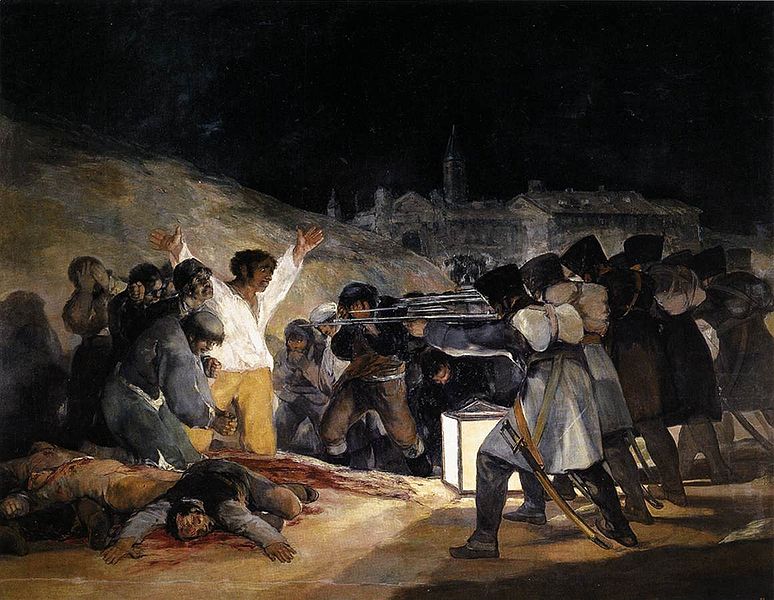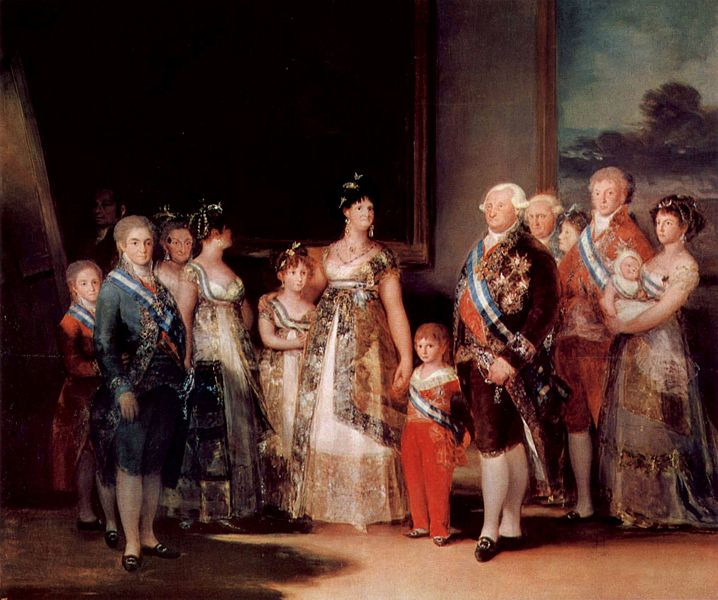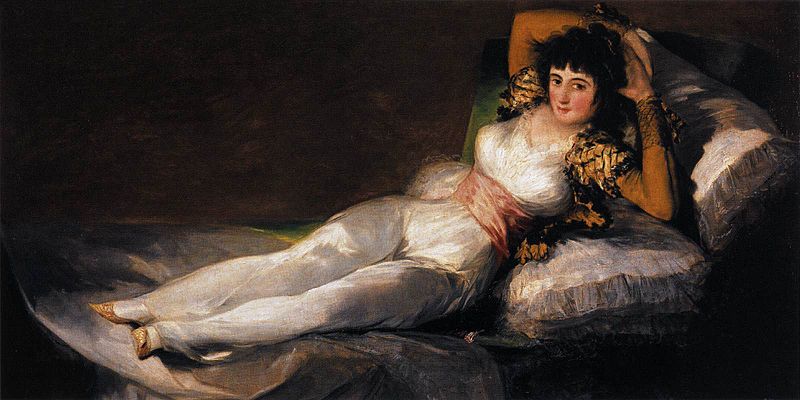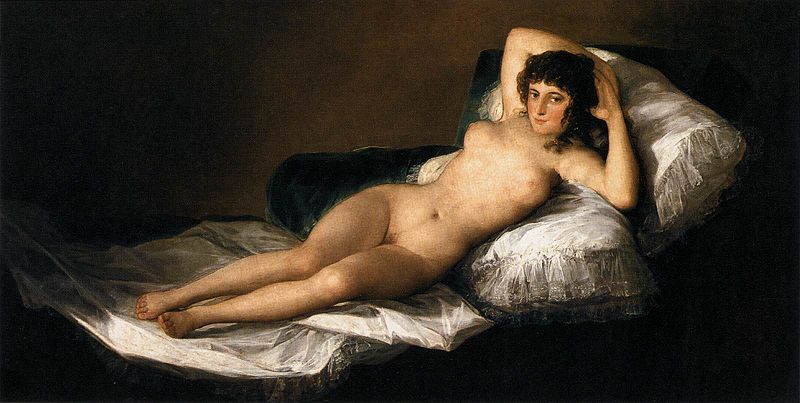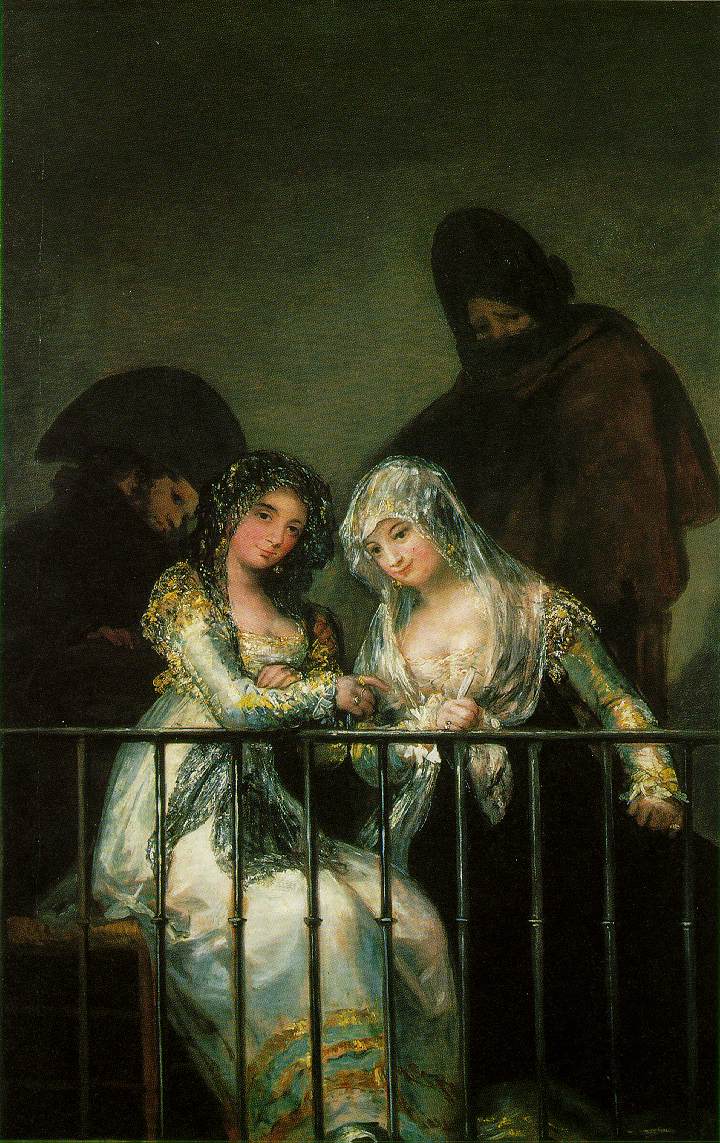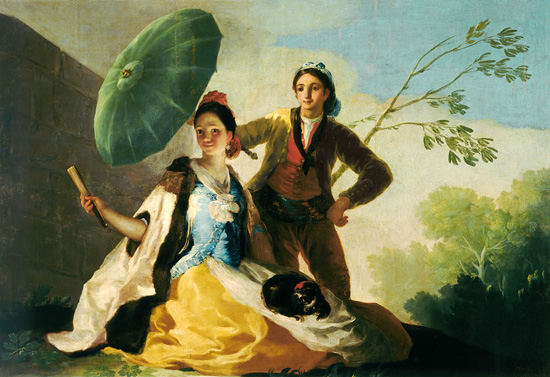<Back to Index>
- Logician Stanisław Leśniewski, 1886
- Painter Francisco José de Goya y Lucientes, 1746
- Sultan of the Ottoman Empire Mehmet II, 1432
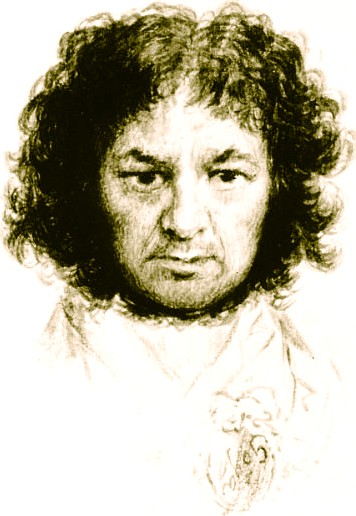
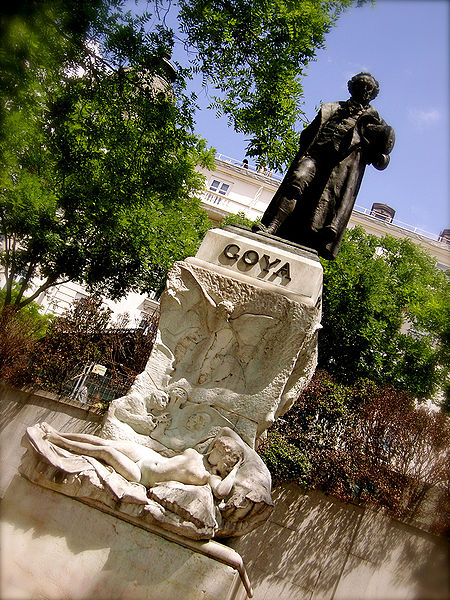
Francisco José de Goya y Lucientes (30 March 1746 – 16 April 1828) was a Spanish painter and printmaker regarded both as the last of the Old Masters and as the first of the moderns. Goya was a court painter to the Spanish Crown and a chronicler of history. The subversive and subjective element in his art, as well as his bold handling of paint, provided a model for the work of later generations of artists, notably Manet and Picasso.
Goya was born in Fuendetodos, Aragón, Spain, in 1746 to José Benito de Goya y Franque and Gracia de Lucientes y Salvador. He spent his childhood in Fuendetodos, where his family lived in a house bearing the family crest of his mother. His father earned his living as a gilder. About 1749, the family bought a house in the city of Zaragoza and some years later moved into it. Goya attended school at Escuelas Pias, where he formed a close friendship with Martin Zapater, and their correspondence over the years became valuable material for biographies of Goya. At age 14, he entered apprenticeship with the painter José Luzán.
He later moved to Madrid where he studied with Anton Raphael Mengs,
a painter who was popular with Spanish royalty. He clashed with his
master, and his examinations were unsatisfactory. Goya submitted
entries for the Royal Academy of Fine Art in 1763 and 1766, but was denied entrance. He then journeyed to Rome, where in 1771 he won second prize in a painting competition organized by the City of Parma. Later that year, he returned to Zaragoza and painted a part of the cupola of the Basilica of the Pillar, frescoes of the oratory of the cloisters of Aula Dei, and the frescoes of the Sobradiel Palace. He studied with Francisco Bayeu y Subías and his painting began to show signs of the delicate tonalities for which he became famous. Goya married Bayeu's sister Josefa on July 25, 1773. His marriage to Josefa (he nicknamed her "Pepa"), and Francisco Bayeu's membership of the Royal Academy of Fine Art (from
the year 1765) helped him to procure work with the Royal Tapestry
Workshop. There, over the course of five years, he designed some 42
patterns, many of which were used to decorate (and insulate) the bare
stone walls of El Escorial and the Palacio Real del Pardo,
the newly built residences of the Spanish monarchs. This brought his
artistic talents to the attention of the Spanish monarchs who later
would give him access to the royal court. He also painted a canvas for
the altar of the Church of San Francisco El Grande, which led to his
appointment as a member of the Royal Academy of Fine Art. In 1783, the Count of Floridablanca, a favorite of King Carlos III,
commissioned him to paint his portrait. He also became friends with
Crown Prince Don Luis, and lived in his house. His circle of patrons
grew to include the Duke and Duchess of Osuna, whom he painted, the
King and other notable people of the kingdom. After the death of Charles III in 1788 and revolution in France in 1789, during the reign of Charles IV, Goya reached his peak of popularity with royalty. In
1786, Goya was appointed painter to Charles III, and in 1789 was made
court painter to Charles IV. In 1799 he was appointed First Court
Painter with a salary of 50,000 reales and 500 ducats for a coach. He
worked on the cupola of the Hermitage of San Antonio de la Florida; he
painted the King and the Queen, royal family pictures, portraits of the Prince of the Peace and many other nobles. His portraits are notable for their disinclination to flatter, and in the case of Charles IV of Spain and His Family, the lack of visual diplomacy is remarkable. Goya received orders from many friends within the Spanish nobility. Among those from whom he procured portrait commissions were Pedro Téllez-Girón, 9th Duke of Osuna and his wife María Josefa Pimentel, 12th Countess-Duchess of Benavente, María del Pilar de Silva, 13th Duchess of Alba (universally known simply as the "Duchess of Alba"), and her husband José María Álvarez de Toledo, 15th Duke of Medina Sidonia, and María Ana de Pontejos y Sandoval, Marchioness of Pontejos. After
contracting cholera and a high fever in 1792, Goya was left deaf, and
he became withdrawn and introspective. During the five years he spent
recuperating, he read a great deal about the French Revolution and its
philosophy. The bitter series of aquatinted etchings that resulted were published in 1799 under the title Caprichos.
The dark visions depicted in these prints are partly explained by his
caption, "The sleep of reason produces monsters". Yet these are not
solely bleak in nature and demonstrate the artist's sharp satirical
wit, particularly evident in etchings such as Hunting for Teeth. Additionally, one can discern a thread of the macabre running through Goya's work, even in his earlier tapestry cartoons. It is also of note that in 1798, he painted luminous and airy scenes for the pendentives and cupula of the Real Ermita (Chapel) of San Antonio de la Florida in Madrid. Many place miracles of Saint Anthony of Padua in the midst of contemporary Madrid. As French forces invaded Spain during the Peninsular War (1808–1814), the new Spanish court received him as had its predecessors. When Josefa died in 1812, Goya was painting The Charge of the Mamelukes and The Third of May 1808, and preparing the series of prints known as The Disasters of War (Los desastres de la guerra). King Ferdinand VII came
back to Spain but relations with Goya were not cordial. In 1814, Goya
was living with his housekeeper Doña Leocadia and her
illegitimate daughter, Rosario Weiss; the young woman studied painting with Goya, who may have been her father. (His wife had died in 1812). He continued to work incessantly on portraits, pictures of Santa Justa and Santa Rufina, lithographs, pictures of bullfighting, and more. With the idea of isolating himself, he bought a house near Manzanares, which was known as the Quinta del Sordo (roughly, "House of the Deaf Man", titled after its previous owner and not Goya himself). There he made the Black Paintings. Goya
left Spain in May 1824 for Bordeaux, where he settled, and Paris. He
returned to Spain in 1826, but, despite a warm welcome, he returned in
ill health to Bordeaux, where he died in 1828 at the age of 82.
